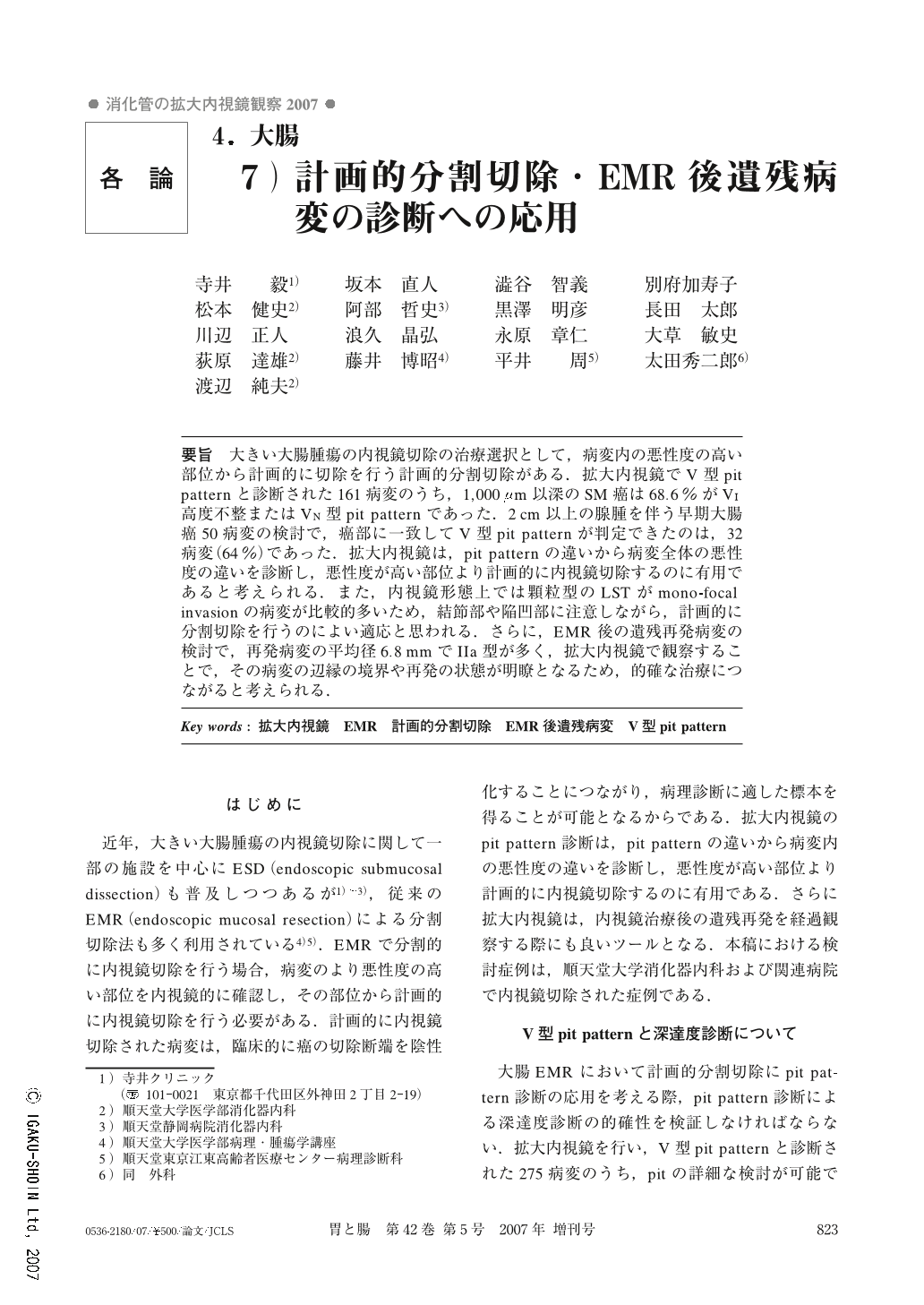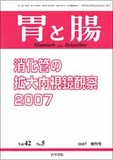Japanese
English
- 有料閲覧
- Abstract 文献概要
- 1ページ目 Look Inside
- 参考文献 Reference
要旨 大きい大腸腫瘍の内視鏡切除の治療選択として,病変内の悪性度の高い部位から計画的に切除を行う計画的分割切除がある.拡大内視鏡でV型pit patternと診断された161病変のうち,1,000μm以深のSM癌は68.6%がVI高度不整またはVN型pit patternであった.2cm以上の腺腫を伴う早期大腸癌50病変の検討で,癌部に一致してV型pit patternが判定できたのは,32病変(64%)であった.拡大内視鏡は,pit patternの違いから病変全体の悪性度の違いを診断し,悪性度が高い部位より計画的に内視鏡切除するのに有用であると考えられる.また,内視鏡形態上では顆粒型のLSTがmono-focal invasionの病変が比較的多いため,結節部や陥凹部に注意しながら,計画的に分割切除を行うのによい適応と思われる.さらに,EMR後の遺残再発病変の検討で,再発病変の平均径6.8mmでIIa型が多く,拡大内視鏡で観察することで,その病変の辺縁の境界や再発の状態が明瞭となるため,的確な治療につながると考えられる.
Endoscopic piecemeal mucosal resection (EPMR) according to plan for resection of large colorectal tumors is generally known. We evaluated 161 colorectal tumors diagnosed as Type V pit pattern. 68.6% of submucosal cancers deeper than 1,000μm showed Type VI (higher irregularity pattern) and Type VN pit pattern. The rate of occurrence of the lesion diagnosed as Type V pit pattern in the area of cancer was 64% in 50 early colorectal cancers with as adenoma component. Magnifying colonoscopy is useful for EPMR according to plan when Type V pit pattern is abserved. Granular type of laterally spreading tumor (LST-G) is a good indication for EPMR. According to our study, the mean size of remnant or recurrent colorectal tumors after EMR was 6.8mm. Using magnifying colonoscopy, the remnant or recurrent tumor after EMR was detected clearly.

Copyright © 2007, Igaku-Shoin Ltd. All rights reserved.


